I make briefings a very important part of my workshops, suggesting to publishers and editors that they need to present content of the day in a brief and attractive manner to readers at key times of the day—usually early morning and early evenings.
An article by Lucia Moses for Digiday, highlights the importance of email newsletters, and, more importantly, how they are designed.
First and foremost, briefings are a way to curate information for our busy readers. In that sense, I believe that The Wall Street Journal’s best read feature, the What’s News column on Page One, is the earliest version of today’s briefings. The WSJ pioneered with the concept of a curated navigator more than 90 years ago when an editor of the era decided that “busy readers need to get summaries of the top stories of the day.”
See the What’s News column of the WSJ here, sometimes it is only one column, but it was two when I designed that newspaper in 1999 and beyond.
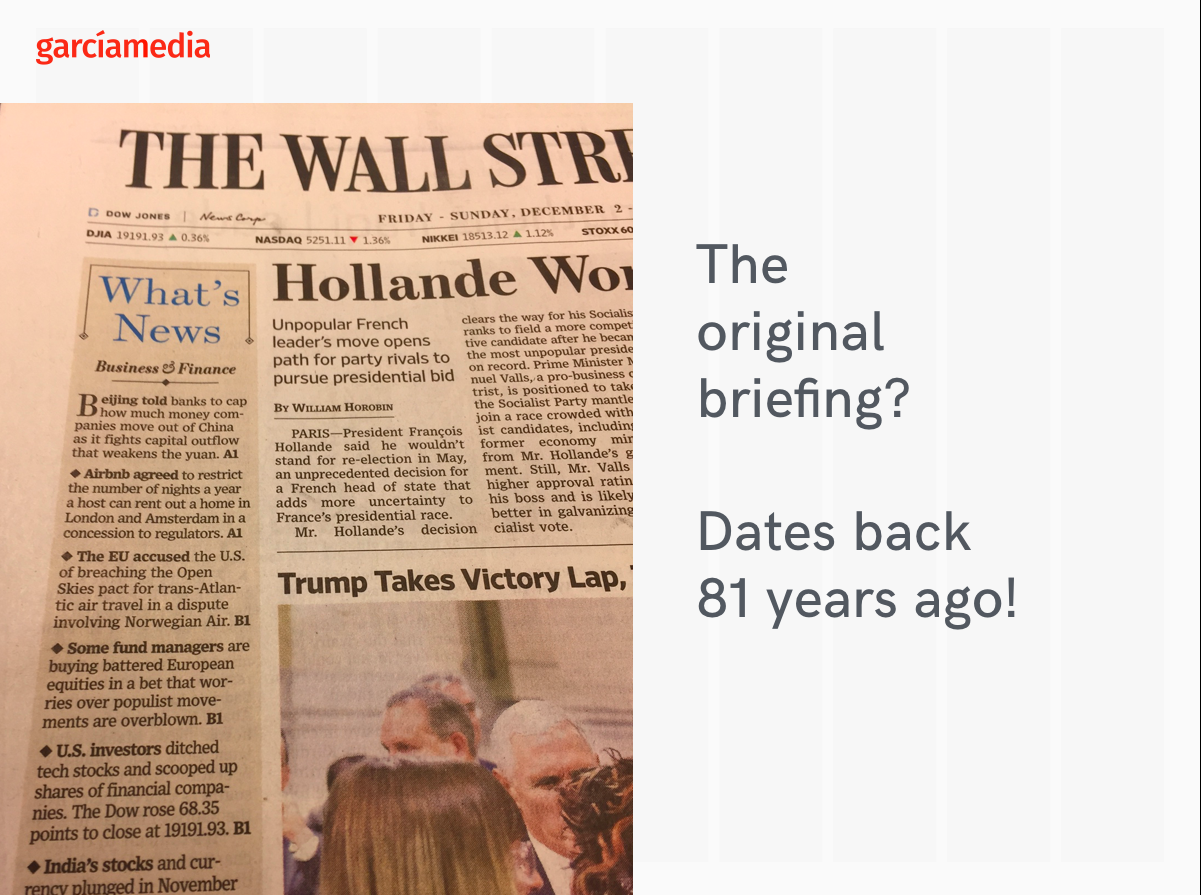
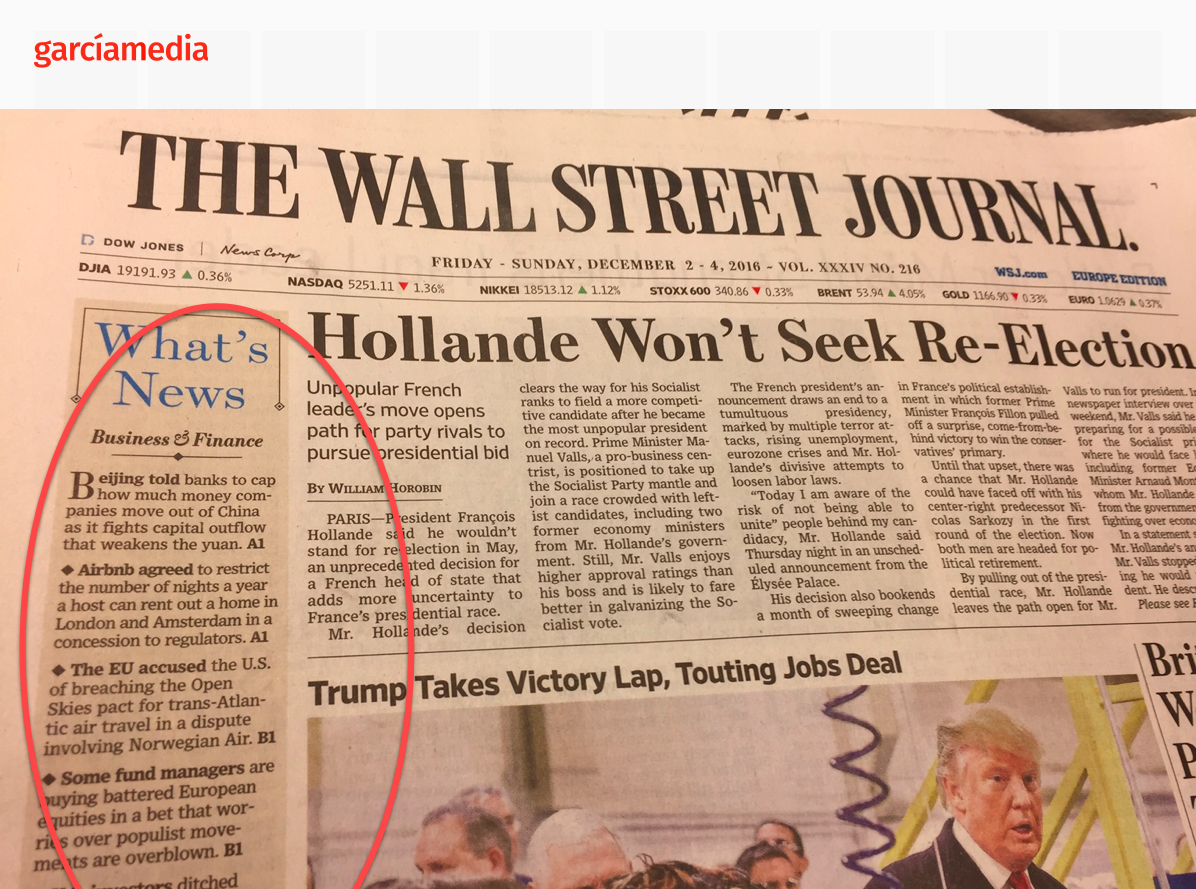
Briefings are mini newspapers that give us a quick preview of what we should know at a certain time of the day. I guess I am addicted to The New York Times Morning and Evening briefings, and look forward to reading them and catching up with the top news of the day even before my first cup of coffee each morning and before I retire at night.
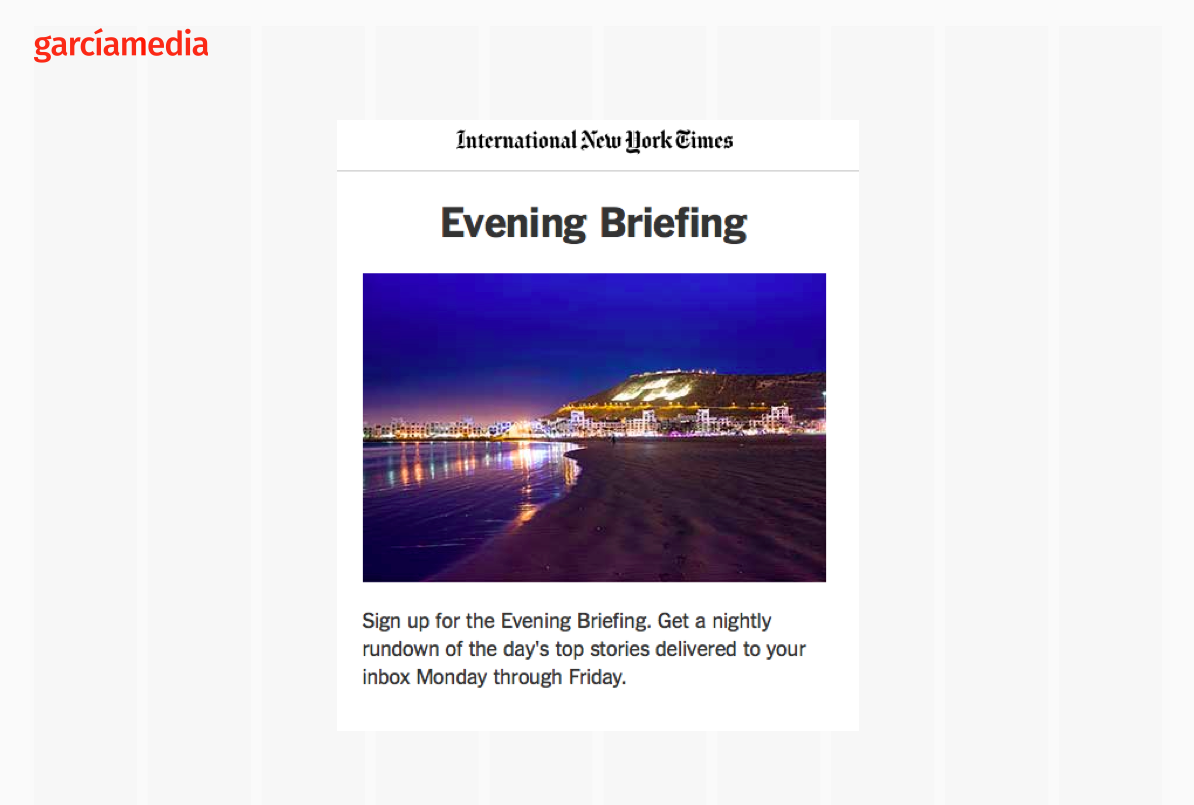
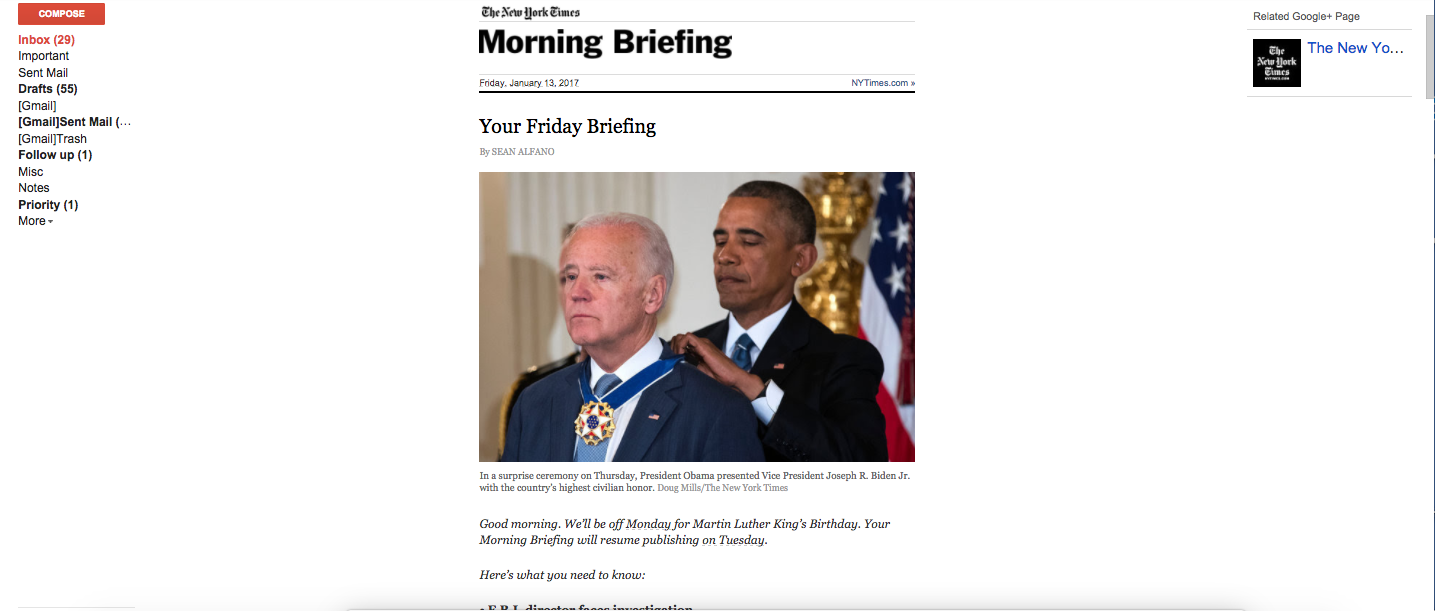
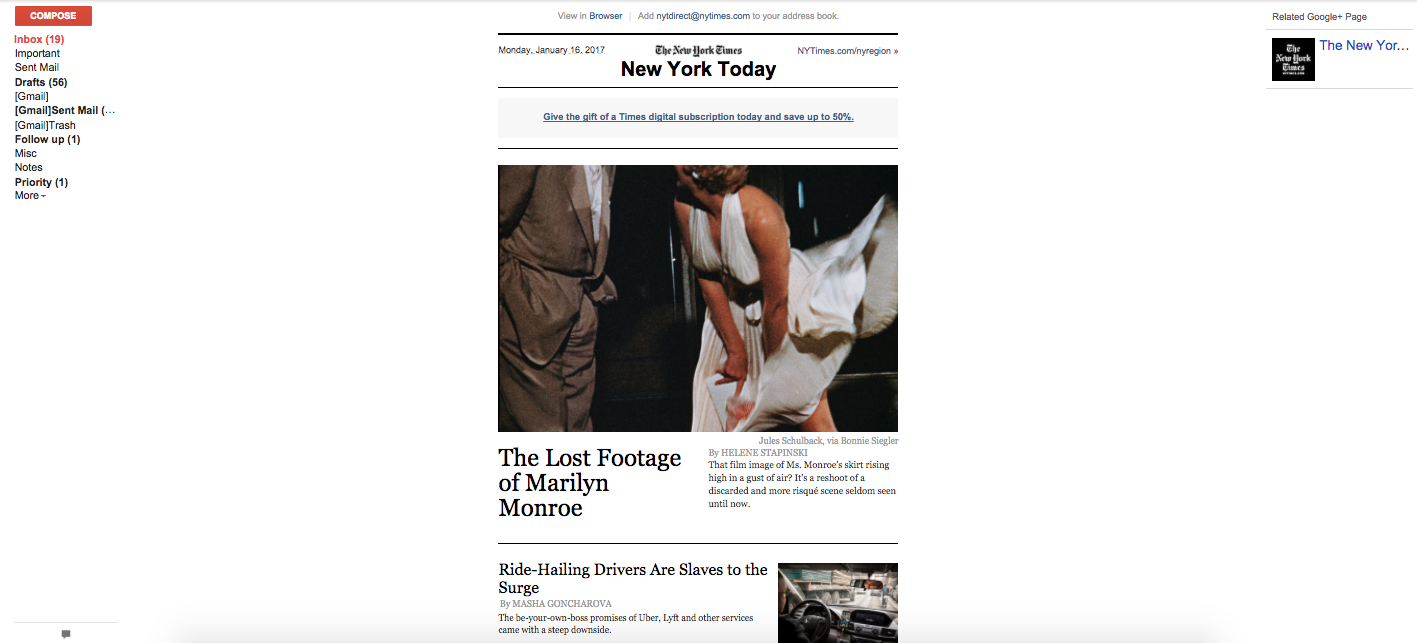
I like how The New York Times’ briefings are chatty (they even say Good Morning), and even use such phrases as Here’s What You Need to Know, to guide the reader.

Briefings may also be about specific topics: sports, politics, entertainment, food, fashion, for example. One of the interesting features of the NYT’s briefing is the Recipe of the Day, which I confess I have followed on some days, especially when the weather is cold and the editor suggests a hearty soup.

While news items usually dominate newspaper briefings, some briefings are devoted to a specific topic, such as Running, or Fashion. Readers appreciate good lifestyle content in their briefings. Good briefings will always include surprises.

Briefings also carry advertising, as we see in this example from The New York Times briefing.
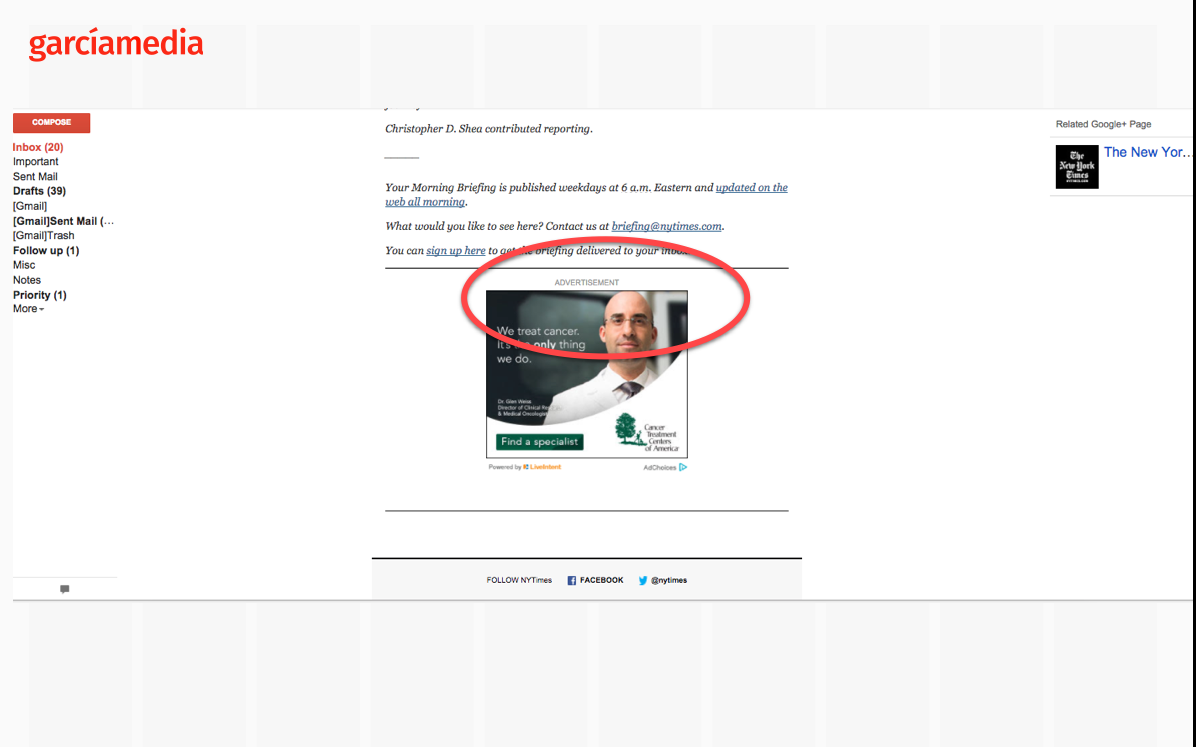
Native advertising and sponsored content also find their way into briefings. The New York Times has the Sophisticated Shopper briefing. And Quartz includes sponsored content as part of its daily briefing.


Another favorite of mine is the Quartz briefing, which is very newsy on a daily basis, with headers such as Surprising Discoveries. A typical headline here: Mushrooms are magic at treating depression and anxiety, or In Alaska, small children are learning to butcher moose. Quartz also publishes a briefing in Spanish (below).

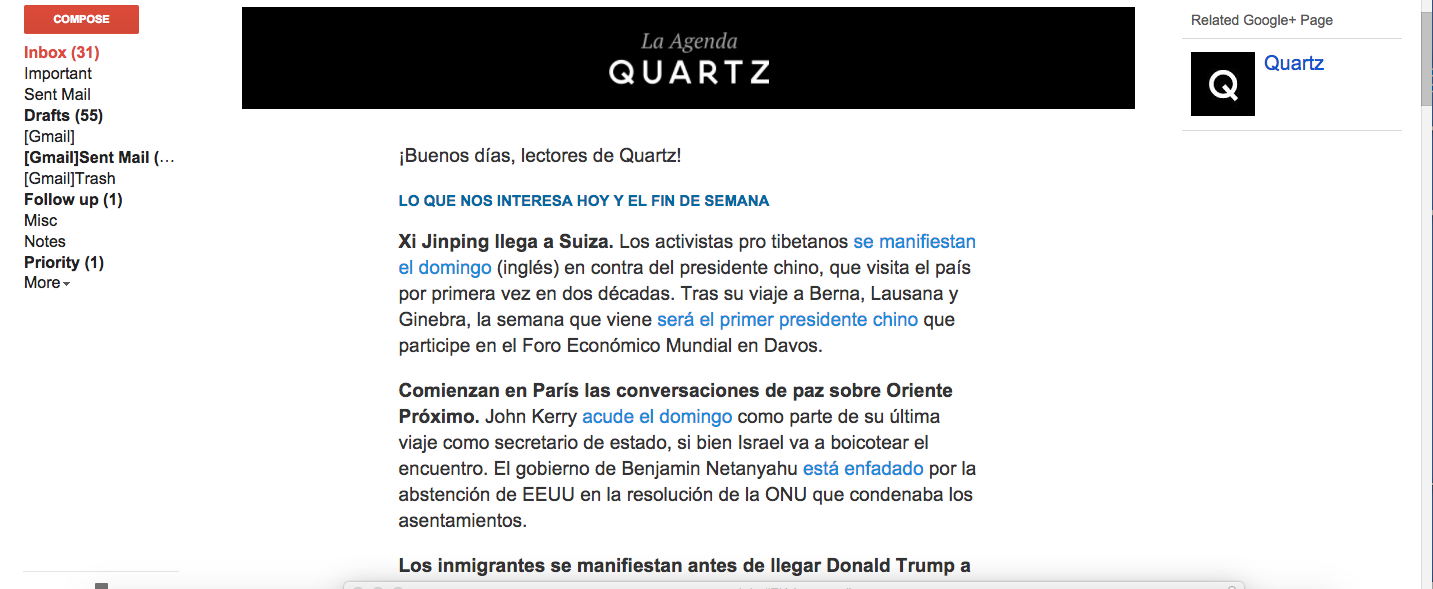
Tips for briefings
Make the writing style conversational, as if you are meeting a neighbor across the fence and updating him on the latest news of the neighborhood.
Go minimalist with the design: briefings will be consumed quickly at peak hours in the reader’s day. Fewer items is better than too many. Simpler is better. The headlines must seduce, and the summaries must entice the reader to want to read the full story. But, if not, the briefings are just what the term implies: a quick way to get updated.
Don’t feel obliged to follow traditional patterns of “departments” such as news, sports, business. Instead, mix content by categories that create associations.
Don’t forget that briefings must include the three categories of what you must know, what you must read, what you must do.
Other newspapers that do interesting briefings are the Financial Times, The Guardian, and the Los Angeles Times' with its California Essentials.
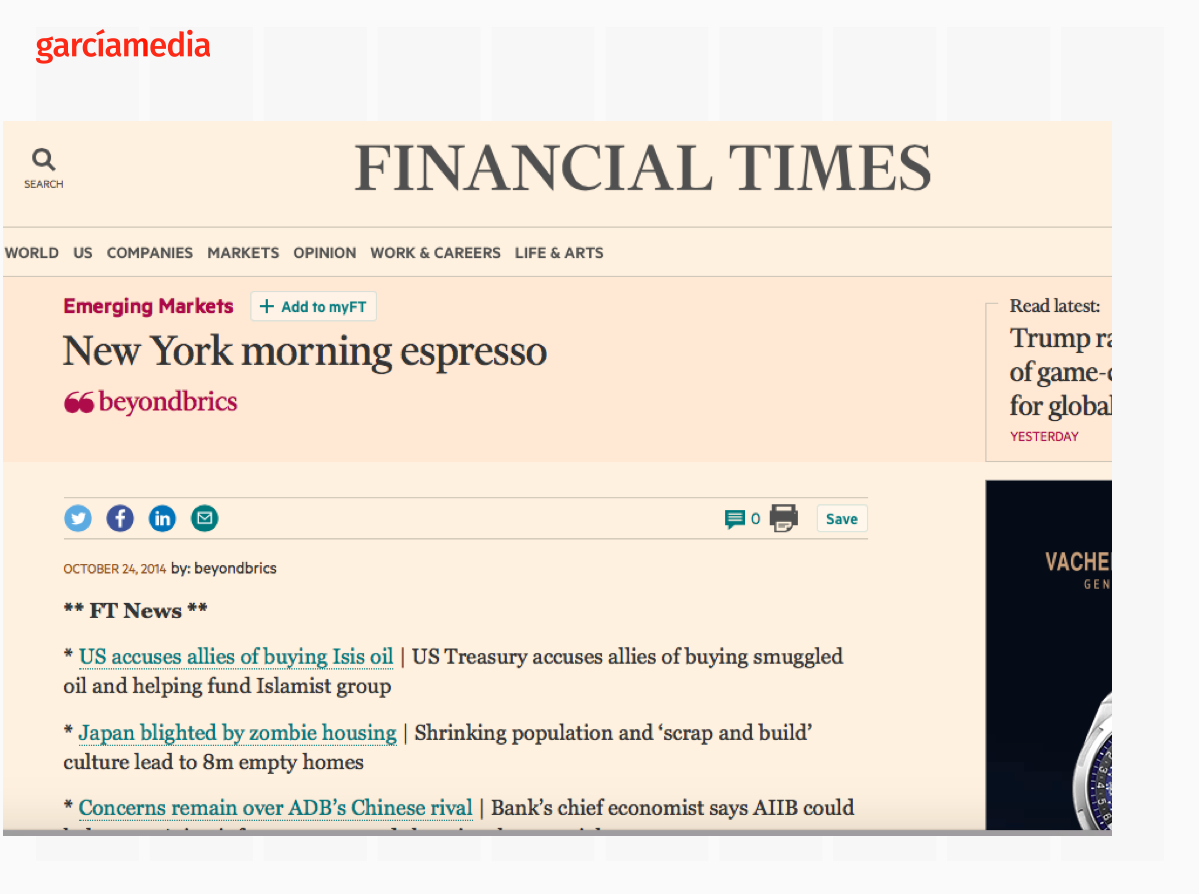
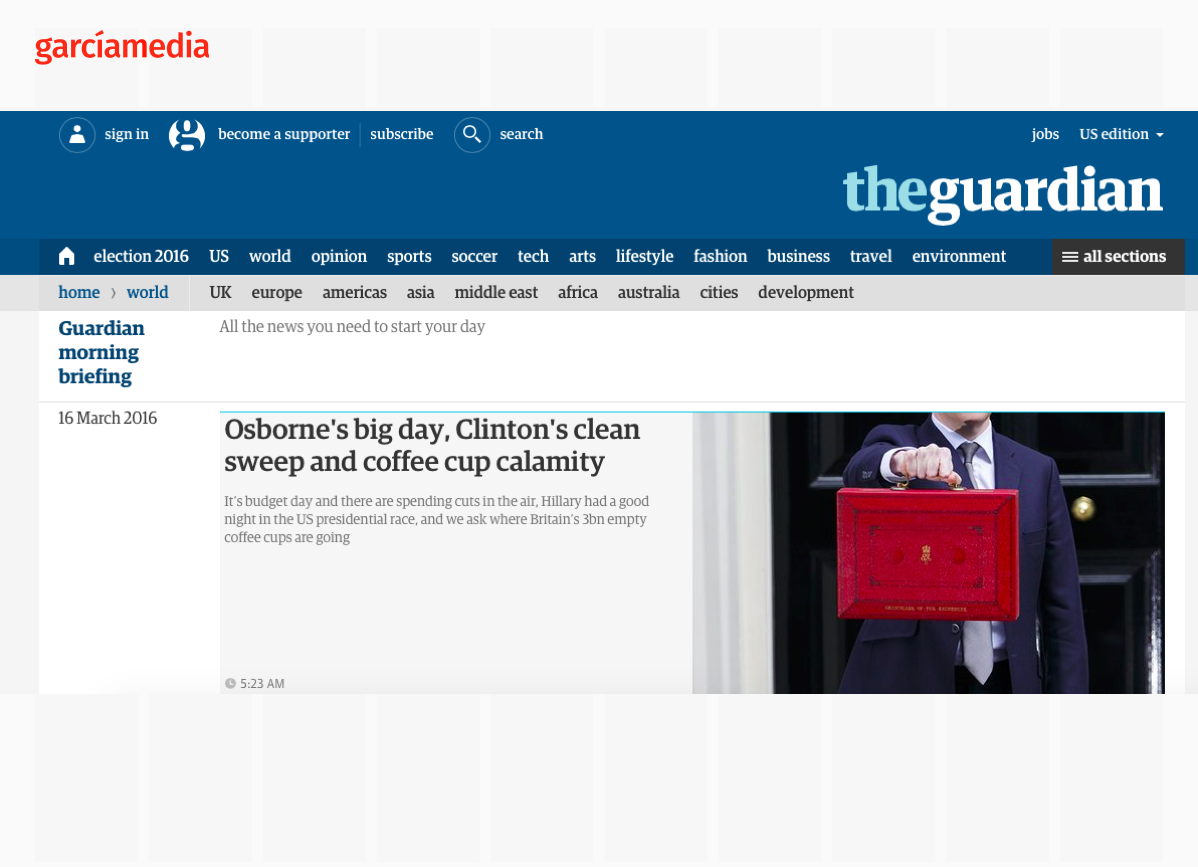
Of related interest
The Washington Post launches a weekly newsletter to highlight the most valuable comments on the site.
Highlight:
At a time when the number of news organisations shutting down their comments in favour of social media seems to be growing, The Washington Post is putting more effort into making the most of these spaces and highlighting valuable contributions from its readers.